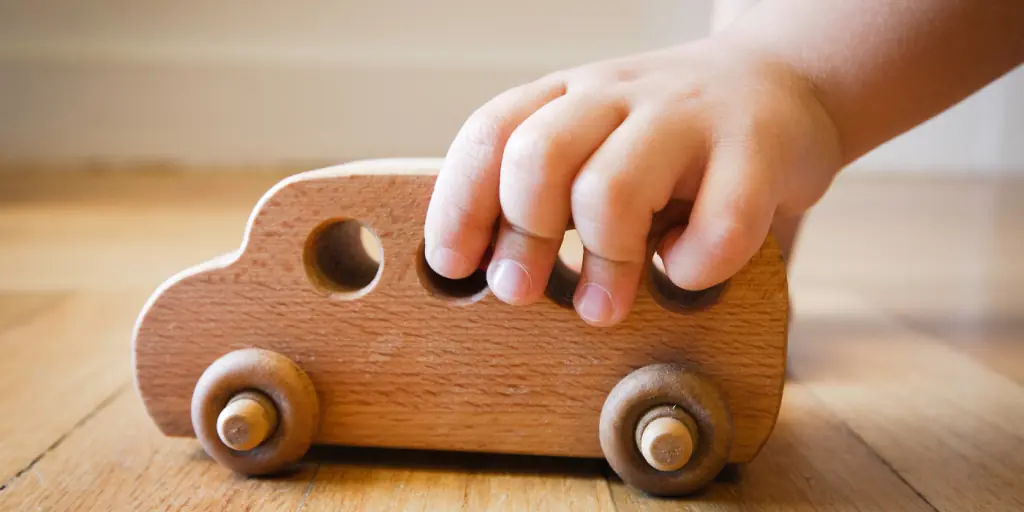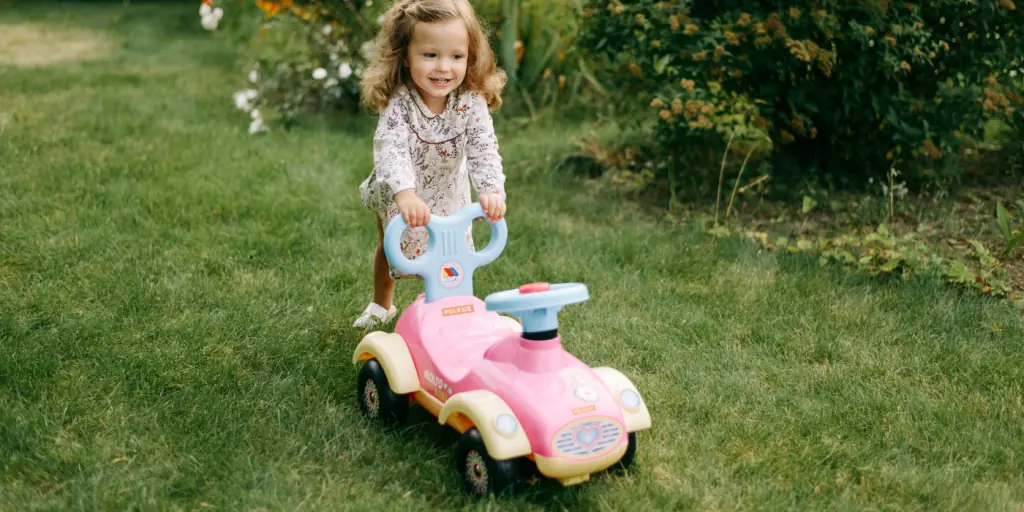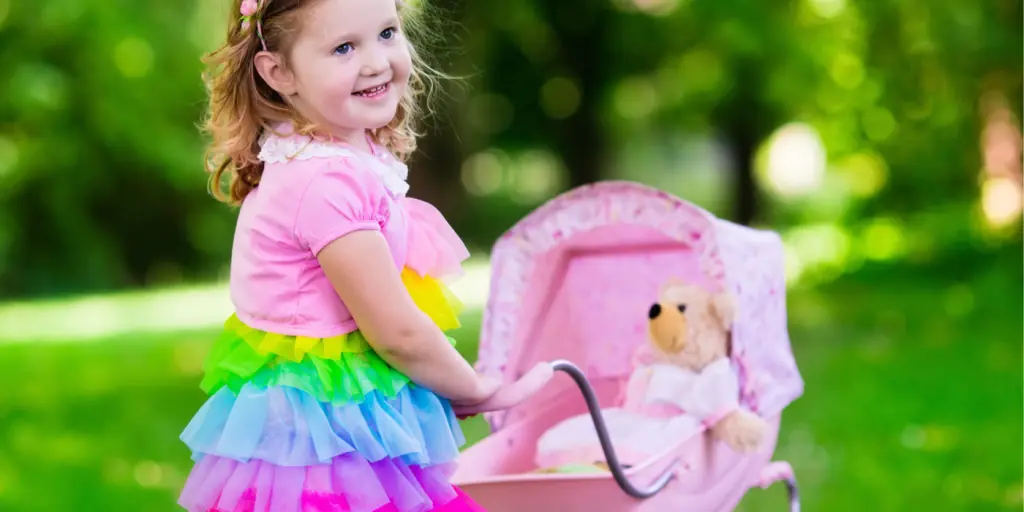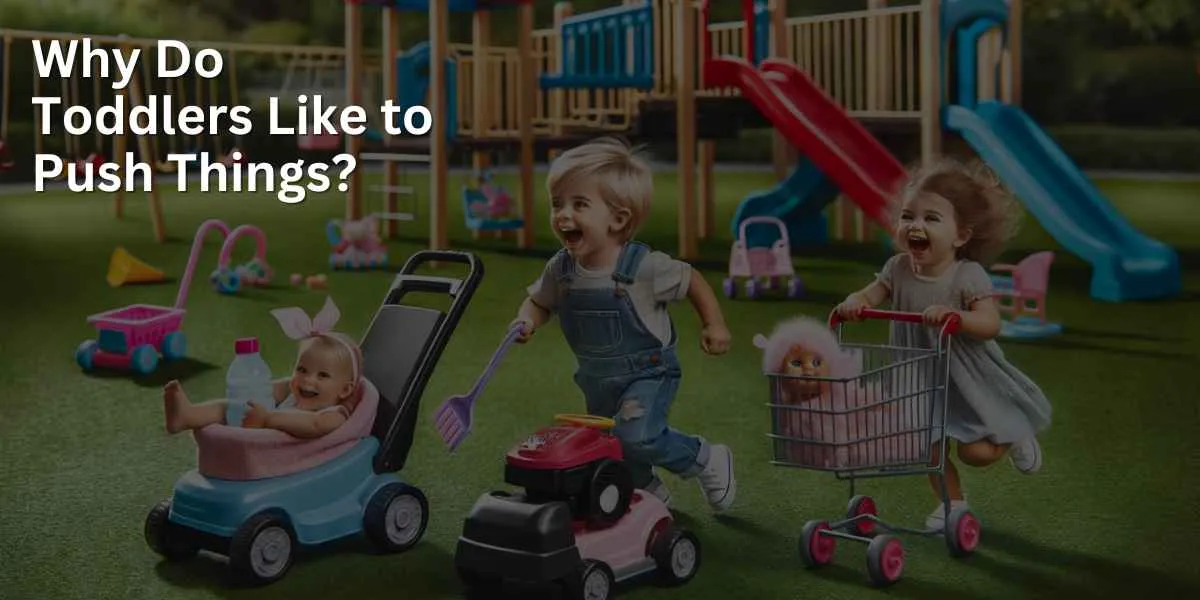When children reach toddlerhood and learning how to walk, they begin to engage in more physical activities like pushing and pulling things. Prams, walkers and push along toy cars are some of the most popular toys on the market- but why do toddlers like to push things?
Toddlers love to push things because the action demonstrates the cause-effect relationship. Having the right push toys for these activities is important to maximise their development.
Pushing objects is a natural and beneficial behavior for toddlers
Pushing helps toddlers develop their gross motor skills, spatial awareness, and problem-solving abilities
Parents should ensure their child’s safety while allowing them to engage in this important developmental activity
Developmental Stage of Toddlers
Toddlers are at a crucial stage of development, both physically and cognitively. At this stage, they are learning to coordinate their movements and exploring their surroundings. Pushing objects allows them to practice their gross motor skills and develop their spatial awareness.
As they push objects around, they are learning to control their body movements, as well as understand the relationship between their body and their surroundings.
Large push toys such as activity walkers are great for children who are just learning how to walk. These toys provide enough support, guides your child as she walks and helps her learn to look ahead while walking. These push toys are designed to encourage movement and mobility.
Small push toys, on the other hand, are recommended for children who haven’t learned how to walk yet. During tummy time, you can give these toys to your child and have her play with them.
It helps her learn how to use her upper extremities as well as facilitate development of hand-eye coordination and fine motor skills.
Encouraging your children to push things should be easy. Children love to copy what adults do so any toy version of real life home items is definitely going to be a hit. Push toys like a lawn mower or even a toy mop are great examples of these toys.

Psychology Behind Pushing
There are several psychological reasons why toddlers like to push things. One reason is a desire for control. By pushing objects, toddlers can exert some control over their environment.
Pushing also provides a sense of experimentation and repetition, which helps them learn cause and effect. This behavior is a way for toddlers to test their environment and experiment with their own abilities.
Benefits of Pushing for Toddlers
Pushing objects provides several benefits for toddlers. It helps develop their gross motor skills, spatial awareness, and problem-solving abilities. Gross motor skills refer to the movement and coordination of large muscle groups, such as walking or running.
Pushing objects helps to strengthen these muscles, and improve overall coordination. Spatial awareness refers to the ability to understand and perceive objects in the environment.
Pushing objects helps toddlers to develop this awareness, as they navigate objects around them.
Lastly, pushing objects helps toddlers to develop their problem-solving abilities as they figure out how to navigate objects around obstacles, and through tight spaces.
Different Types of Push-Pull Toys
Push-pull toys are a great way to encourage pushing behavior in toddlers. These toys allow toddlers to engage in both pushing and pulling, which can help them develop their balance, coordination, and hand-eye coordination.
Push-pull toys can also help toddlers develop their imaginative and social skills, as they engage in pretend play and interact with others. Examples of push-pull toys include wagons, tricycles, and toy cars.
Additional Benefits of Push-Pull Toys
In addition to the benefits of pushing objects, push-pull toys have some unique benefits. For example, push-pull toys can help toddlers develop their fine motor skills as they grasp the handles and maneuver the toys. T
hey also encourage hand-eye coordination as toddlers navigate their environment while pushing or pulling the toy. Finally, push-pull toys provide a great opportunity for parents to bond with their child through play.

Risks of Pushing for Toddlers
While pushing objects can be beneficial for toddlers, there are also potential risks associated with this behavior. T
oddlers can injure themselves or others if they push objects that are too heavy or unstable. They may also damage objects around them, such as furniture or walls. Pushing objects on inclines or uneven surfaces can increase the risk of falls.
Tips for Parents
To ensure their child’s safety while allowing them to explore and push, parents can take several precautions. First, they should provide their child with appropriate objects to push, such as lightweight toys or a child-sized shopping cart.
Parents should also supervise their child while they are pushing objects and make sure they are pushing in a safe area, away from hazards.
Parents can encourage their child to push in a variety of ways, such as pushing a stroller, a toy car, or a laundry basket. This will help to strengthen their gross motor skills and spatial awareness.
Lastly, parents should make sure their child is wearing appropriate footwear while pushing objects to prevent slips and falls.

Encouraging Pushing Behavior
In addition to providing push-pull toys, there are several other ways parents can encourage their child’s pushing behavior. For example, parents can create obstacle courses or scavenger hunts that require pushing objects to complete.
They can also encourage their child to push objects of different shapes and sizes, which will challenge their problem-solving skills and spatial awareness.
Potential Developmental Concerns
While pushing behavior is generally a normal and healthy behavior for toddlers, there may be some instances where it is cause for concern. For example, if a toddler consistently pushes objects with excessive force, it could be a sign of sensory processing issues.
Parents should also be aware of any physical or cognitive delays that could impact their child’s ability to push objects.
By discussing these potential concerns, parents can be more aware of their child’s behavior and seek appropriate support if needed.
Why should you buy push toys?
Push toys are great toys for early development. These toys help kids develop physical strength, balance, gross motor skills, fine motor skills, hand-eye coordination and many more.
There are many kinds of push toys. Push toys such as activity walkers are recommended for children learning how to walk. They often come with other toys built right in like mini sorting toys and building blocks.
When choosing a push toy for walking, check the height of the toy to make sure that your child is not tiptoeing or stooping. Also check for detachable parts that are potential hazards. The overall build of the push toy should be sturdy because you do not want your child pushing a flimsy toy.
Small toys like toy cars are great for little children who can’t walk yet. They can push the toy as much as they want which helps develop fine motor skills and hand-eye coordination.
There are other toys that encourage pushing. For instance, you can inflate a beach ball and encourage your child to push or roll them.
In terms of material, it is highly recommended to choose wooden toys over plastic ones. Wood has natural antibacterial properties which makes them safer than plastic toys. But you still need to clean them from time to time. Some parents favour plastic toys because they’re easier to clean than wooden toys.
While that’s true, it’s really not that hard to clean wooden push toys. Just keep in mind that you can’t submerge wooden push toys in water or other liquid solutions.
Otherwise, you will end up with a damaged or deformed toy. You can use vinegar and baking soda to clean your wooden push toys. These are common household items that are effective at cleaning and disinfecting.

FAQ on Why Do Toddlers Like to Push Things?
Is pushing behavior always beneficial for toddlers?
While pushing behavior is generally beneficial for toddlers, there may be instances where it is cause for concern. If a toddler consistently pushes objects with excessive force or shows a lack of interest in pushing objects, it could be a sign of developmental delays or sensory processing issues.
What are some appropriate objects for toddlers to push?
Lightweight toys, child-sized shopping carts, strollers, toy cars, and laundry baskets are all appropriate objects for toddlers to push.
Are there any risks associated with pushing behavior?
Yes, there are potential risks associated with pushing behavior. Toddlers can injure themselves or others if they push objects that are too heavy or unstable. They may also damage objects around them, such as furniture or walls. Pushing objects on inclines or uneven surfaces can increase the risk of falls.
How can parents encourage their child’s pushing behavior?
Parents can encourage their child’s pushing behavior by providing appropriate objects to push, creating obstacle courses or scavenger hunts that require pushing objects to complete, and encouraging their child to push objects of different shapes and sizes.
By providing a variety of objects and challenges, parents can help their child develop their gross motor skills, spatial awareness, and problem-solving abilities.

Are push-pull toys beneficial for toddlers?
Yes, push-pull toys are beneficial for toddlers. These toys allow toddlers to engage in both pushing and pulling, which can help them develop their balance, coordination, and hand-eye coordination. Push-pull toys can also help toddlers develop their imaginative and social skills, as they engage in pretend play and interact with others.
Why are Push Toys So Important For a toddler’s development?
Push toys are essential for toddler development as they help toddlers learn and enhance their fine motor strength, physical growth, and spatial skills. When you hand your child a push or pull toy, the benefits exceed just the fun that most babies will enjoy having with these toys.
These toys, which are typically pull toys or involve pushing, promote whole body coordination as most babies enjoy using them, fostering important physical and cognitive skills during early childhood.





